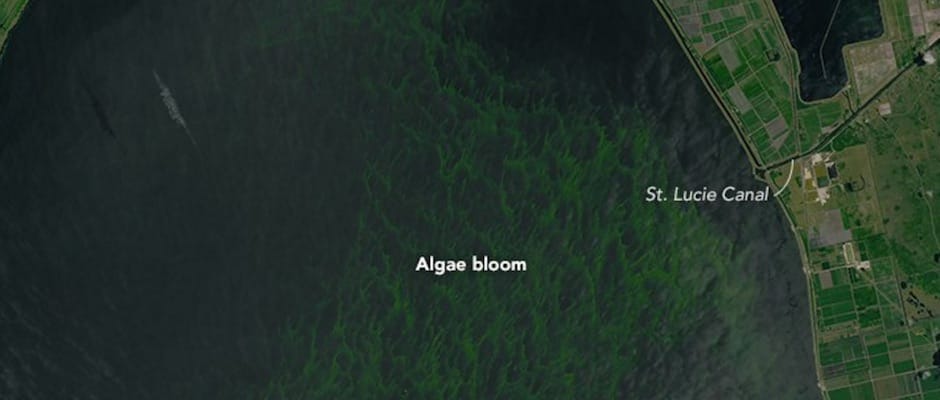Parts of Florida Are In a State of Emergency Over a Toxic Algae Bloom That Can Be Seen From Space

The ubiquitous use of agricultural chemicals is poisoning our ranges, farmlands, estuaries and oceans, posing huge risks to our civilization.
NOTE: This post initially appeared on Quartz (QZ.com)
Some Florida coasts look like scenes from a horror film.
The green goo is everywhere, it’s scaring people and causing them to shut their businesses and retreat into their homes. Even the state’s governor has given up, declaring a state of emergency in the four counties that are worst affected.
The algae bloom is so large that you can see it from space.
Bloom in Lake Okeechobee https://t.co/e9oIOxcqec #NASA pic.twitter.com/tLSPUFbCss
— NASA Earth (@NASAEarth) July 6, 2016
This isn’t a new problem. The green goo is toxic blue-green algae. Its blooming is commonly caused by excess fertilizers washed into rivers and lakes. In Florida, the contaminated waters came from Lake Okeechobee and drained into St. Lucie canal.
Blue-green algae’s toxins can cause rashes if touched and vomiting if ingested. At worst, it can damage our organs. Animals also suffer. The 2013 algae bloom in Florida’s Indian River in killed more than 120 manatees. The dense blooms reduce the levels of dissolved oxygen in the waters, slowly choking the fish. They also cut off sunlight, slowly killing off vegetation in lakes.
These poisonous algae blooms are not just Florida’s problem; they regularly appear in as many as 20 states. In places near Lake Erie, such as Toledo, Ohio, algae blooms can cause a severe shortage of drinking water.
A study published earlier in 2016 suggested conservation practices at farms could help control algae blooms. Irrigation management and contour farming can preserve soil and reduce run-offs of fertilizer into water bodies.
And, yet, that may not be enough. Rising temperatures caused by global warming are making it easier for algae to bloom. Warmer weather also brings more rain, which causes increased fertilizer run-offs.
